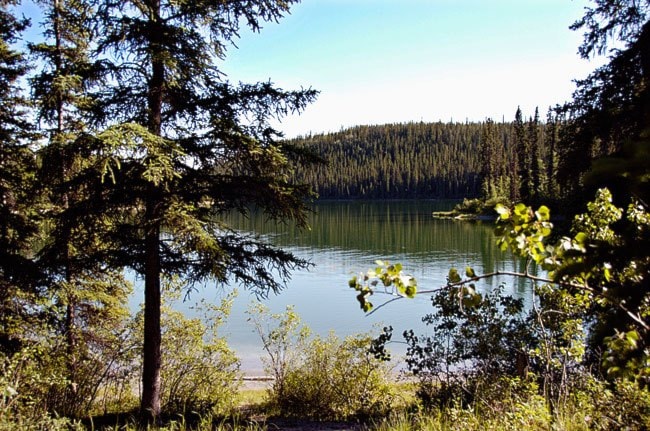Whitehorse may investigate residential development in the Long Lake and McLean Lake areas.
On Monday night, city administration recommended council approve two $300,000 funding agreements from the Yukon government’s Department of Community Services.
These deals would pay for research to see if houses can be built in these parts of the city. The city needs to see if the soil and slopes of the land are good for building, and what impacts there would be on wildlife and the environment, traffic and other city services. Heritage assessments would also need to be done.
The funding would last until March 31, 2015.
But this doesn’t mean development would begin soon.
The city remains committed to its short-term goals, like increasing the number of homes in the southern part of downtown, senior planner Mike Ellis told council Monday night. But both these areas have been listed in the Official Community Plan as places for potential future large-scale residential development. With construction on Whistle Bend underway and planning for Porter Creek D put on hold last week, these are the next areas for the city to look at.
But the city needs more information about what could be developed in these areas, and it doesn’t have the funds to complete these studies on its own. These agreements are just another step in moving the process forward. If the city delays, it could lose the funding, said Mike Gau, manager of planning.
“We don’t want sprawl,” he said Tuesday afternoon. Both of these areas have been identified for future planning because they are close to the city’s existing water and sewage lines.
And not all of these areas can be developed for housing anyway, said Gau. Hills in the Long Lake area make much of it unsuitable for housing, he said.
The city can only make decisions about design after these studies are done, he said.
“So before the public asks all the tough questions, we need to go get some answers. That’s what all these studies are all about, trying to narrow down where our next major subdivision is going to be in 15, 20 years plus,” said Gau.
But moving forward won’t be without some opposition.
“Do we have creeks running through this area?” Coun. John Streicker asked Monday night. “Because I think we should know that creeks are significant wildlife corridors, and areas that we should protect.”
He wasn’t the only one to remind council of environmental concerns. They were at the fore of the discussion surrounding Porter Creek D, noted Coun. Kirk Cameron.
“We know that there’s a lot of values attached to these areas in their current state as natural areas. And any step that moves towards development, of course, is going to come with concerns being raised,” Ellis said, noting this process is to gather information. There are many creeks in these areas, he said.
The city couldn’t have picked more contentious areas to consider for future development, Karen Baltgailis, executive director of the Yukon Conservation Society said on Tuesday.
“We think that it would be jumping the gun to invest $600,000 in doing that planning work at this time,” she said. The city should see if Whitehorse residents support development in these areas before doing studies, she said.
“Ideally, Yukon government would be persuaded to enter into an even smaller contribution agreement to help fund the consultations, instead of this great big $600,000 proposal. Because I think what will happen is if they enter into this contribution agreement with Yukon government, it will be seen exactly the same way as the planning money for McIntyre Creek was, which was the more you invest, the more the city and Yukon government want to have developments in that area. You don’t spend that kind of money and then just say, ‘Ah, nah, we’re not interested.’”
Wildlife has been sighted in the Long Lake area, and salmon spawn in nearby Croucher Creek, she said. And the lake is one of the only ones warm enough to swim in during the summer, she added.
As for McLean Lake, the conservation society and residents have tried to limit quarrying in that area for years, Baltgailis said.
Residents in the McLean Lake area shouldn’t be too concerned, said Skeeter Miller-Wright, a board member of the McLean Lake Residents’ Association. Putting sewage and water lines in the area will be expensive because of the shallow bedrock there, he said. The best option for housing in the area is country-residential, said Miller-Wright.
The Kwanlin Dun First Nation has land in both of these areas. The First Nation’s director of land resources and claim implementation was travelling and unavailable for comment.
Council will vote on whether or not to approve the recommendations next week.
Contact Meagan Gillmore at
mgillmore@yukon-news.com
